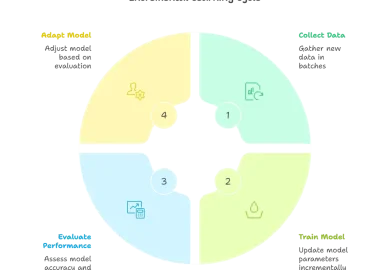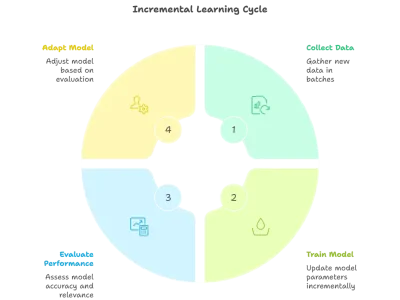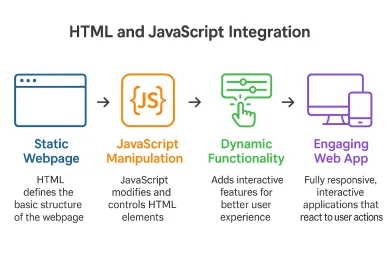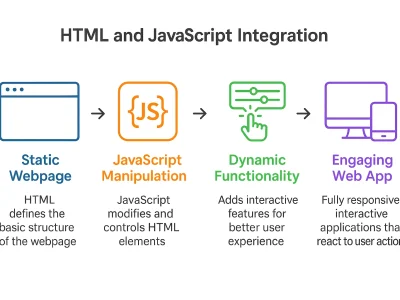Introduction
Let’s face it—when you’re just getting started with programming, it’s easy to write line after line of code without much structure. But as your projects grow, that approach quickly becomes difficult to manage, debug, or even understand. This is exactly where Object-Oriented Programming in Python comes into play. It brings structure to your code, making it not just cleaner, but also easier to scale, update, and maintain.
If you’re learning Python, mastering Object Oriented Programming in Python is your next step. Its clear, intuitive syntax makes Python one of the most accessible languages for learning OOP. Mastering Object Oriented Programming in Python lays the groundwork for building larger applications and helps you work confidently with libraries, frameworks, and advanced tools.
What is Object-Oriented Programming?
Instead of writing code line-by-line like a recipe, OOP is more like designing the tools and ingredients first, then using them however you like. In Object Oriented Programming the key idea is that you create objects from classes. A class is like a blueprint, and each object you make from that blueprint carries its own set of data and behaviors.
Think of it like this: if “Car” is a class, then your red Toyota and your friend’s silver Honda are both objects. They both have attributes (like color, speed) and can do things (like drive, brake). This approach lets you reuse, scale, and maintain your code without having to rewrite the same logic every time.
Python makes it especially easy thanks to its clean and readable syntax. Real talk, learning OOP isn’t just about syntax and rules—it changes how you think. Suddenly, you’re not just writing code to make stuff work. You’re designing systems. You’re breaking down problems into reusable parts. You’re thinking like an architect, not just a builder.
It forces you to ask the right questions:
-
What entities are involved in this problem?
-
What do they do?
-
What data should they hold?
-
How do they relate to each other?
This mindset shift helps you write cleaner, more maintainable, and more professional code. And if you’re eyeing a career in tech—whether it’s software development, data science, or automation—knowing OOP is going to make your life so much easier.
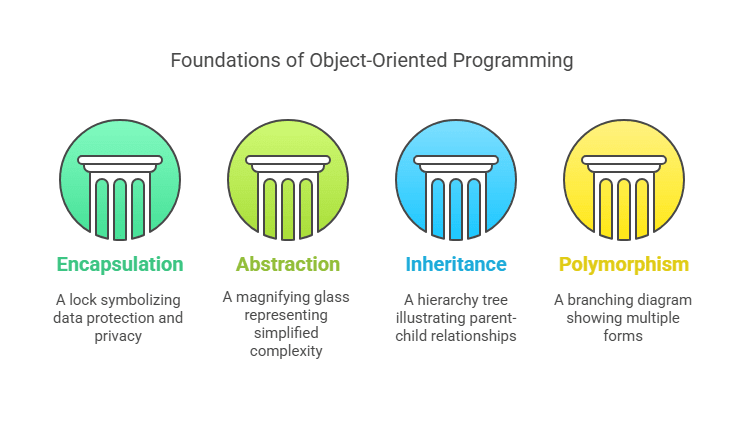
The Four Pillars of OOP in Python
To understand Object Oriented Programming in Python, you need to grasp these four core principles.:
1. Encapsulation
This is about wrapping your data (variables) and the functions that work with it (methods) inside a class. You control how data is accessed and changed, keeping things safe and organized.
2. Abstraction
Hide the complex details and show only what matters. For example, you use .sort() without knowing the sorting algorithm inside, and you trust it works.
3. Inheritance
Build new classes from existing ones. You define a base class and then create child classes that reuse or tweak its behavior. It’s super helpful in keeping your code DRY (Don’t Repeat Yourself).
4. Polymorphism
Same method name, different behavior depending on the object. For instance, a .draw() method could draw a square or a circle depending on the class that calls it. This keeps your code flexible and clean.
By learning object oriented programming concepts, you’ll be able to write more modular and scalable code.
Classes and Objects in Python
Classes and objects form the backbone of Object Oriented Programming in Python. Here’s a super simple example:

When you create my_dog, you make a unique object based on the Dog class. The __init__() method runs when the object is created and helps set up its initial data. The self keyword refers to the current instance, letting you access or modify its properties.
Instance vs. Class Variables
In Python classes, you’ll deal with two kinds of variables:
-
Instance variables – Unique to each object. They’re usually defined inside
__init__()usingself. -
Class variables – Shared across all instances. Defined directly under the class name.
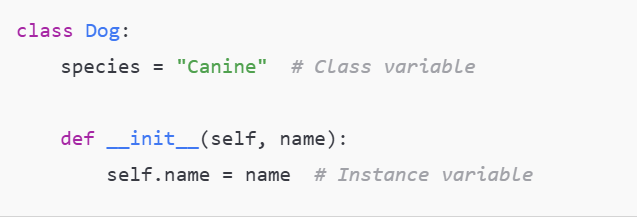
All Dog instances will share the species value, but each can have a unique name. Use instance variables when values differ between objects, and class variables when values remain constant. Knowing the difference helps with memory management and predictable behavior.
Methods in Python Classes
Python gives you three types of methods inside a class:
Instance Methods
Most common. They use self to access individual object data.

Class Methods
Use the @classmethod decorator and the cls parameter. They work on the class as a whole.
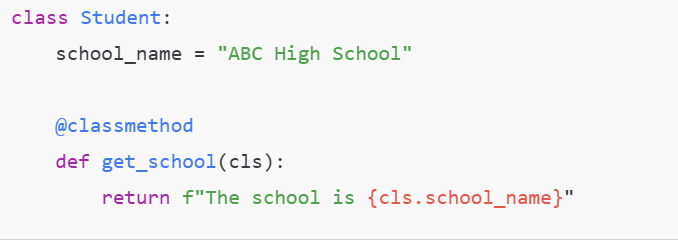 Static Methods
Static Methods@staticmethod. These don’t access the class or instance directly but are helpful as utility functions.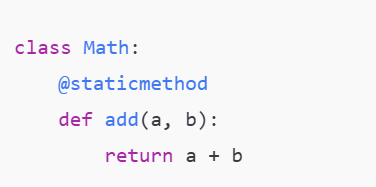 Understanding Object Oriented Programming in Python is essential for scaling your projects.
Understanding Object Oriented Programming in Python is essential for scaling your projects.Inheritance in Python
Inheritance is one of the key concepts in Object Oriented Programming in Python. It allows a child class to inherit attributes and methods from a parent class. This promotes code reuse and creates a logical class hierarchy. In Python, inheritance is declared by passing the parent class name inside parentheses.
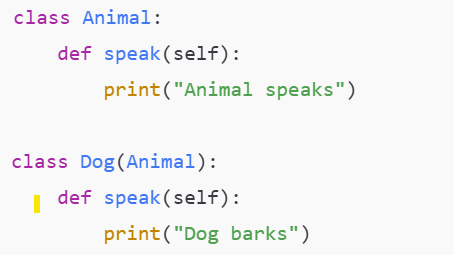
Here, Dog inherits from Animal, but also overrides the speak() method. Python also supports multiple inheritance, where a class can inherit from more than one parent class, but it should be used cautiously due to potential conflicts.
The super() function calls methods from the parent class, ensuring the inherited features work correctly. If you need to refer back to the parent class, super() helps call its methods easily.
Polymorphism in Python
Here comes polymorphism—another tough-sounding term, but it’s quite simple. Polymorphism means many forms. Think of it like this: You have a speak() method, but it behaves differently depending on which object you call it on.
Polymorphism allows you to use the same method name across different classes and works based on context. The concept of polymorphism in Object Oriented Programming makes your code more flexible.
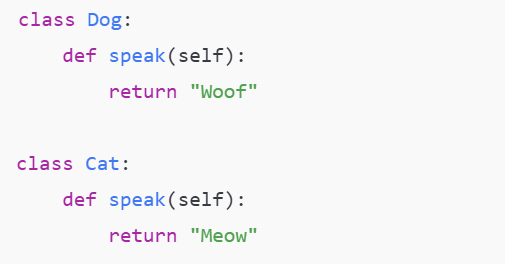
Same method name, but different outcomes. That’s polymorphism. It keeps your code flexible and extensible. You can introduce new types later without changing your existing functions. That’s powerful.
You can loop over a list of these objects and call .speak() on each, without needing to know which animal it is. This is Python’s duck typing at play—if it walks like a duck and quacks like a duck… you get the idea.
Encapsulation & Access Modifiers
Encapsulation is a fancy and specific word that means keeping things private and safe inside an object.
You don’t want every part of your program poking around and messing with your object’s internal data. That’d be like leaving your house keys under your doormat with a sign that says, “Please don’t rob me.”
We can encapsulate data in Python using private variables (prefixing them with _ or __). It’s more of a convention than a hard rule (Python is polite like that), but it keeps things tidy.
Python uses naming conventions instead of strict access control:
-
name→ public (openly accessible) -
_name→ protected (meant for internal or subclass use) -
__name→ private (name-mangled to prevent external access)
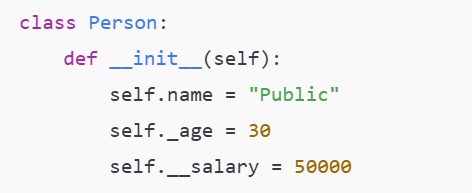
Encapsulation is your way of saying: “Hey, use this class how I intended you to. Don’t go snooping around where you shouldn’t.”
Want more control? Use getters and setters to manage how attributes are accessed or updated.
Real-World Project: Bank Account Class
Let’s tie it all together with a mini project: a simple bank account class.
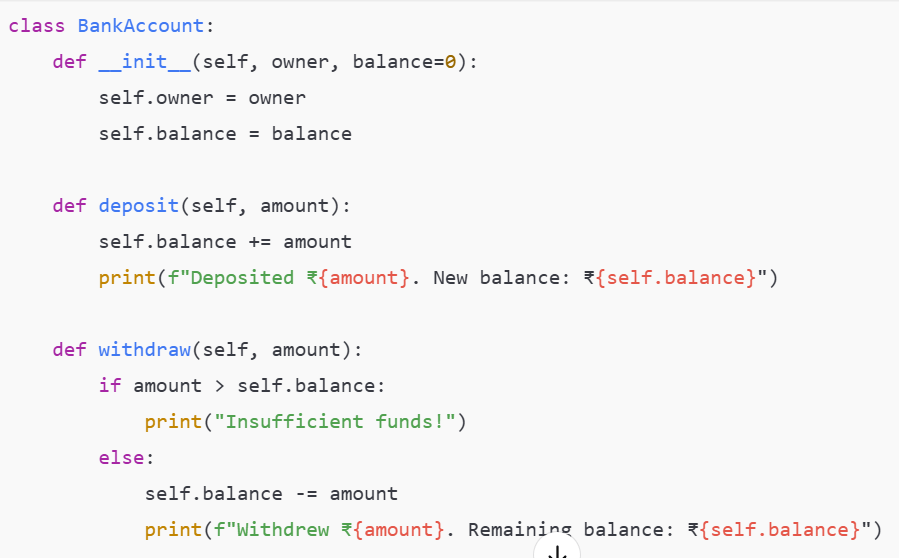
This example is a simple use of Object Oriented Programming to manage complex data.
Common Mistakes to Avoid
One of the common mistakes is not understanding Object-Oriented Programming properly.
-
Forgetting to use
selfin instance methods -
Misusing or forgetting
super()in child classes -
Creating unnecessary class hierarchies (overengineering)
-
Trying to force Object Oriented Programming ideas from other languages too rigidly
Python is flexible. Use that to your advantage. Write clean, simple classes. Stick to the DRY principle. And remember—not everything needs to be a class. Sometimes, a simple function does the job just fine.
Conclusion
Learning Object Oriented Programming in Python gives you a solid foundation for writing smart, clean, and future-ready code. By understanding encapsulation, abstraction, inheritance, and polymorphism, you’ll start thinking like a real developer.
Start small—build classes around things you know, like books, pets, or users. Then, slowly work your way up to larger projects like banking apps, inventory trackers, or games. Python is a great language to start with, and once you’ve grasped OOP, you’ll find yourself writing code that’s not just functional but fun to work with.

